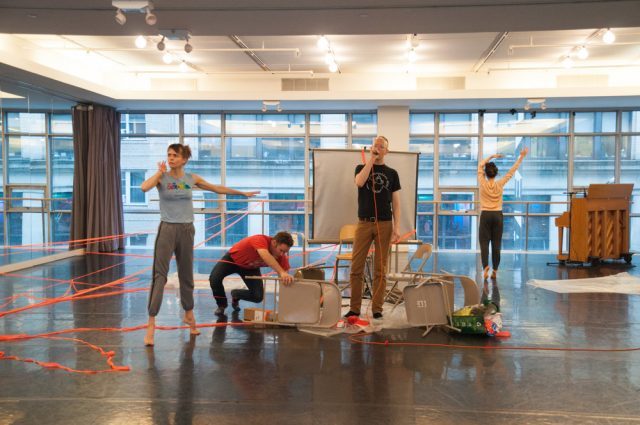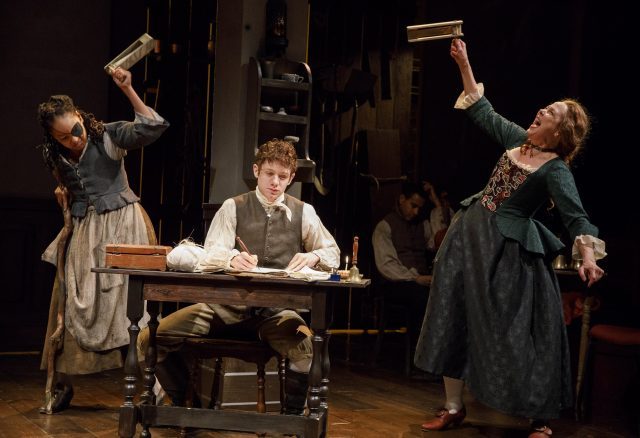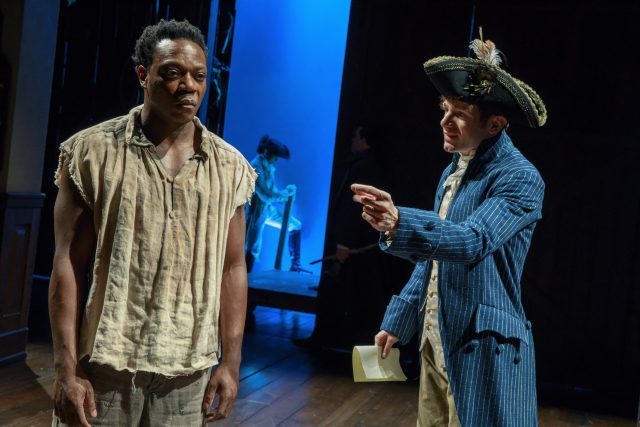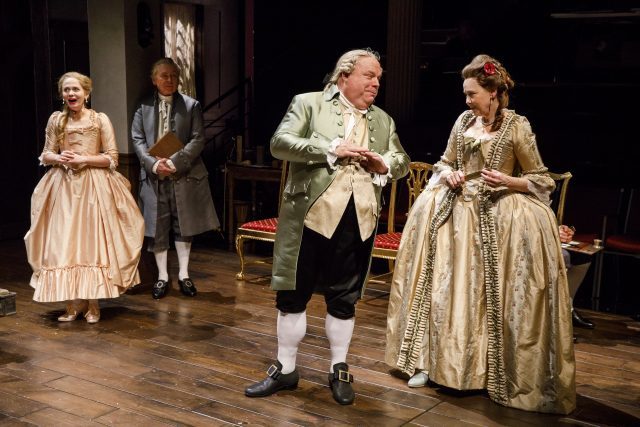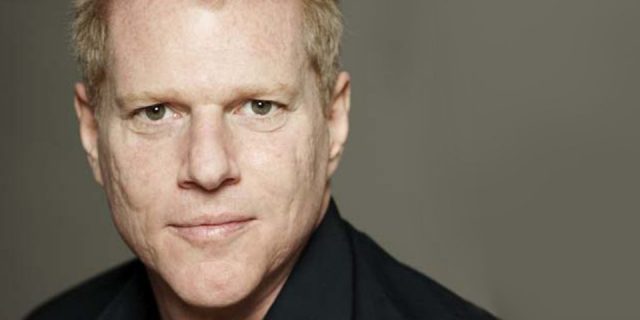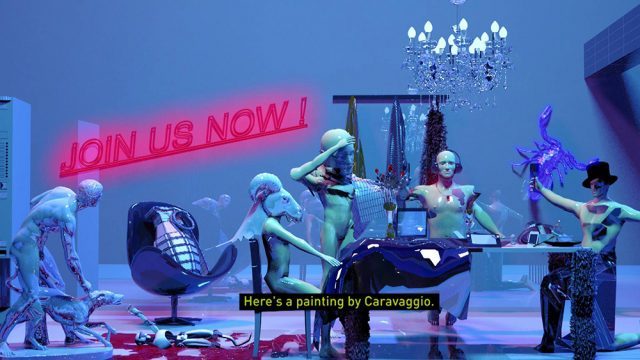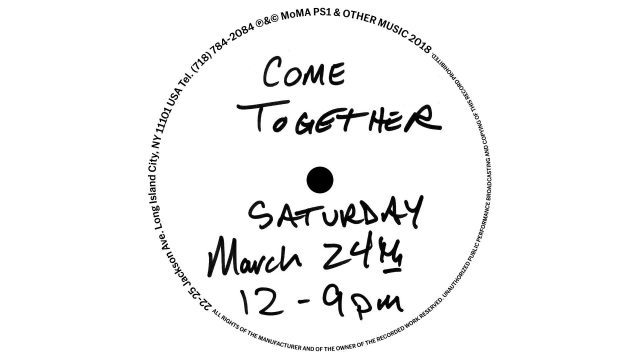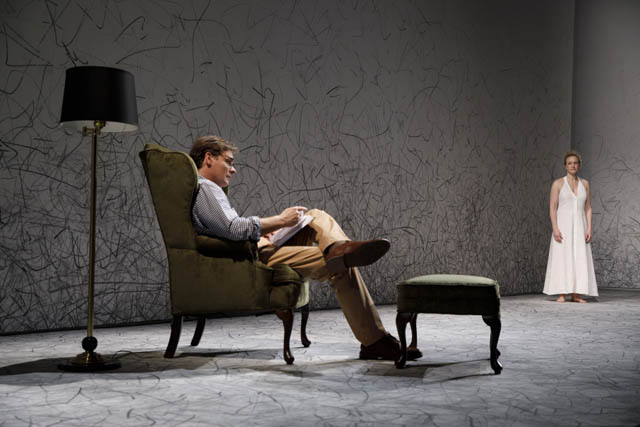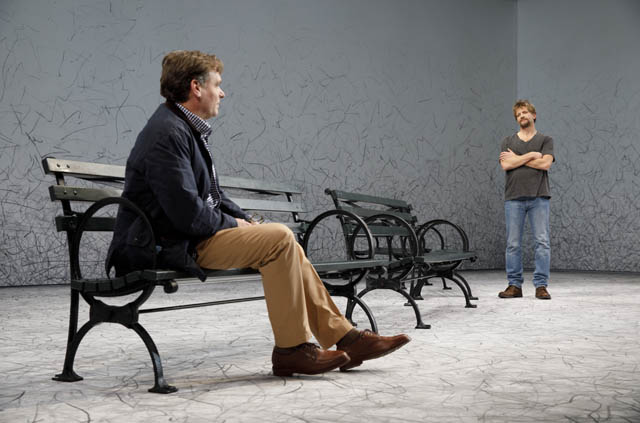
Sherri (Jessica Hecht), Bill (Andrew Garman), and Charlie (Ben Edelman) share a toast before things spiral out of control in new play at Lincoln Center (photo by Jeremy Daniel)
Lincoln Center Theater at the Mitzi E. Newhouse
150 West 65th St. between Broadway & Amsterdam Ave.
Tuesday – Sunday through April 29, $92
212-362-7600
www.lct.org
Joshua Harmon makes it three-for-three with his third professionally produced play, the timely and provocative Admissions, continuing at the Mitzi E. Newhouse at Lincoln Center through April 29. Harmon boldly skewers white privilege, a sizzling-hot topic in America today, in a work written by a white man, directed by a white man, performed by an all-white cast, and seen by a mostly white audience. Although criticized by some, it’s perversely critical that Harmon has included only white characters, because this kind of liberal racism and privilege is a specifically white problem that needs to be addressed by whites. Sherri Rosen-Mason (Jessica Hecht) and Bill Mason (Andrew Garman) both work at Hillcrest, a second-tier boarding school in New Hampshire where Sherri is head of admissions and Bill is headmaster. As the play opens, dyed-in-the-wool New Englander Roberta (Ann McDonough), who works in development, brings Sherri a draft of the admissions catalog, which infuriates Sherri when she sees very few people of color in the brochure. Her agenda is crystal clear: “When I first got to Hillcrest, the student body was ninety-four percent white, six percent students of color,” Sherri explains. “Now, I have worked like a dog the last fifteen years so that our school looks a little bit more like the country in which it is situated, and today, we’re eighteen percent students of color. Which is still an embarrassingly low number, but it’s three hundred percent better than where we were just fifteen years ago.” Roberta argues that she did her best and that she does not see color, that Sherri is overly concerned about race, leading to an uncomfortable discussion about just how black biracial student Perry Peters is. While Roberta says he is black, Sherri is worried that he doesn’t “read black” in the photo in the catalog. “He looks whiter than my son in this picture,” Sherri says, referring to Charlie (Ben Edelman), who, like Perry, is applying to colleges. But when Perry, whose mother, Ginnie (Sally Murphy), is good friends with Sherri, gets into Yale and Charlie gets wait-listed, Sherri starts singing a different tune, determined to do whatever she can to get her son back on the track of privilege and merit.
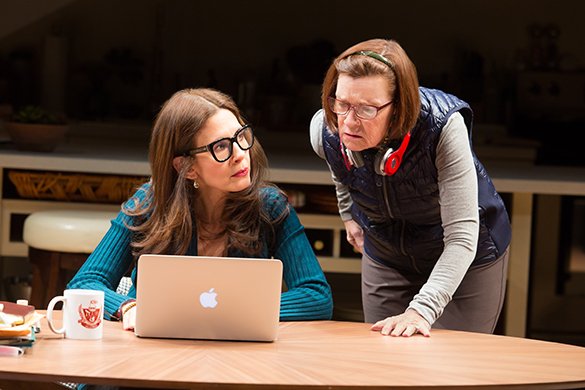
Sherri (Jessica Hecht) and Roberta (Ann McDonough) debate diversity at New Hampshire boarding school in Joshua Harmon play (photo by Jeremy Daniel)
Admissions is anchored by a long, show-stopping monologue by Charlie, marvelously delivered by Edelman, in which the angry student rails against the current politically correct climate that he believes favors women and people of color over white males. The speech infuriates Bill, who calls his son a “spoiled little overprivileged brat.” Later, when Charlie decides to take responsibility and do what he thinks is the right thing, Sherri admonishes him: “We’re not talking about diversity, we’re talking about you, Charlie, you.” And therein lies the NIMBY dilemma as Harmon harpoons liberal ideas of diversity, racial equality, quotas, and what used to be called affirmative action: It’s all well and good until it (maybe) affects their child. Sherri even goes at it with Ginnie, believing that Perry got into Yale primarily because he checked the “black” box on his application. But Ginnie fights right back, claiming that Bill has a better job than her husband, Don, because Bill is white and Don is black. Again, it’s evident that Harmon has included only the white people in his story, that Perry, Don, and any other black men or women exist offstage, as opposed to Dominique Morisseau’s hard-hitting Pipeline, which ran at the Newhouse last summer and was also set at a school dealing with race and class issues. White privilege is still rampant throughout the nation, no matter how many white people, liberal or conservative, think it’s not and find the whole idea offensive. Yet it is not the job of black Americans to “wake up” white Americans to their own racism; the oppressed do not need to appear before a white audience to explain themselves to their oppressors, and thus they are absent from Harmon’s play. White people need to clean up their own side, however messy and painful the process may be.

Ginnie (Sally Murphy) and Sherri’s (Jessica Hecht) friendship is tested in Admissions (photo by Jeremy Daniel)
Riccardo Hernandez’s open set serves as both the Masons’ kitchen and living room and Sherri’s office, equating the private and the professional. Director Daniel Aukin (4000 Miles, Bad Jews) navigates the tense, explosive dialogue seamlessly; theatergoers should pay close attention to the other characters when one is doing the talking, especially during the longer speeches. Tony nominee Hecht’s (The Assembled Parties, A View from the Bridge) hesitant style works well for Sherri, countering Garman’s (The Christians, Salomé) firmer, more direct approach. But it’s Edelman (Significant Other, The Idiot Box) who steals the show as Charlie, a confused kid trapped in the middle of an incendiary issue, a smart young man who has to find respite by running into the woods and screaming his head off. Harmon’s debut, 2012’s Bad Jews, was a dark comedy about three siblings fighting over a family heirloom; it began at the Roundabout’s subterranean Black Box before moving to the larger Laura Pels upstairs. His follow-up, 2015’s Significant Other, dealt with a gay twentysomething man who watches his three close girlfriends find love while he remains single; it started at the Laura Pels and then transferred to the Booth on Broadway. Admissions is about a lot more than just getting into college — and it certainly passes the test to qualify for a bigger house as well.
